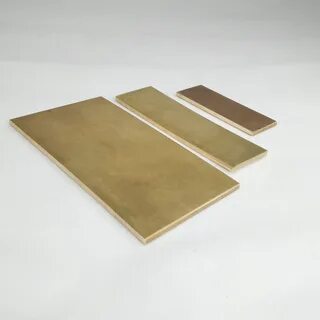Hot foil stamping is one of those finishing techniques that never goes out of style. The shine of metallic lettering, the elegance of an embossed logo, the way a holographic pattern catches the light it all begins with the right tooling. Behind every sharp, professional impression are carefully made hot foil plates and hot foil stamping dies that are matched to the needs of the job.
Magnesium Dies: Reliable and Versatile
For many projects, magnesium remains the best choice. It balances performance, cost, and turnaround time, which makes it ideal for most hot stamping and custom foil stamping, embossing, and even letterpress work. Magnesium holds fine detail well and transfers heat effectively, giving printers clean results on a variety of surfaces. Recent improvements in production have made magnesium suitable for nearly all applications except the most intricate designs.
Magnesium dies come in multiple thicknesses, making them adaptable for hot or cold foil stamping, embossing, debossing, crash printing, and traditional letterpress. In some cases, magnesium can be mounted on wood to reach type-high for specialty uses. When paired with custom moulded embossing counters, they can deliver perfect impressions while protecting the die itself.
Silicone Dies: Ideal for Unique Surfaces
When a project involves stamping on a curved, contoured, or irregular surface, silicone is often the answer. Silicone hot stamping dies are made from specialized heat-conductive rubber that conforms to the shape of the substrate. This makes them a strong choice for plastics, acrylics, and other rigid materials where a flat metal die might not work as well.
Also Read: When the Impression Matters: Choosing the Right Die for Foil Stamping.
Silicone does a particularly good job with metallic foils such as gold and silver, as well as more eye-catching holographic and prismatic foils. Because silicone absorbs impact and prevents distortion around the stamped area, it can also speed up production compared to harder materials.
Polymer Dies: Niche Applications
Photopolymer has become a newer option in hot foil plates and dies. These dies are steel-backed and processed specifically to transfer foil. Their use is limited, and they are best suited for flat applications that do not require long runs. One advantage of polymer is that, like silicone, it prevents deformation of the finished product. However, polymer dies are usually intended for a single job and do not have the longevity of magnesium or other metals.
Copper Dies: Premium Quality for Demanding Jobs
While copper dies are less common today, they still have their place. Copper can handle very long runs and highly intricate designs where no compromise on detail is acceptable. The downside is that copper is more expensive and requires a longer turnaround time. For projects that demand the very highest quality, though, copper dies remain unmatched.
Finding the Right Fit
Choosing between magnesium, silicone, polymer, or copper depends on the nature of the job. Some projects need speed and affordability, while others require durability and extreme precision. Hot foil stamping dies are not one-size-fits-all, and knowing which material to select can save both time and cost while ensuring the best final result.
For more than fifty years, PlateCrafters has helped printers and brands make those decisions with confidence. Whether the need is for standard magnesium hot foil plates, flexible silicone dies, or specialized copper tooling, the focus remains on delivering clean impressions, reliable performance, and the right solution for every application.

